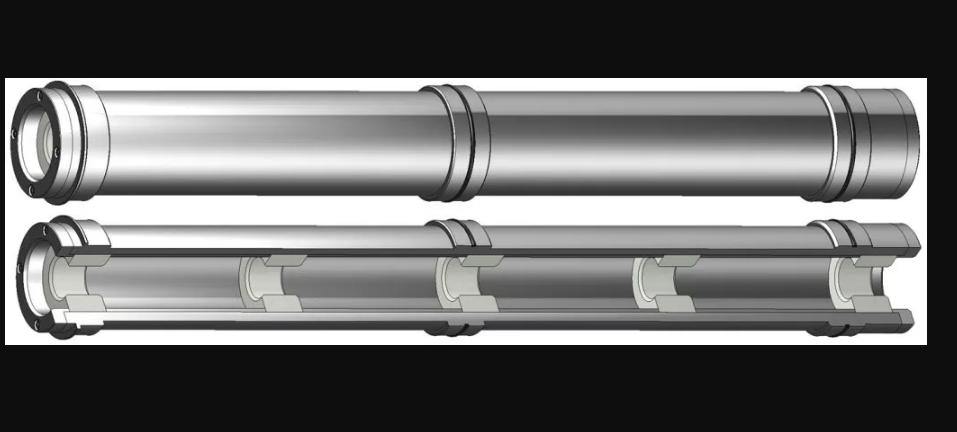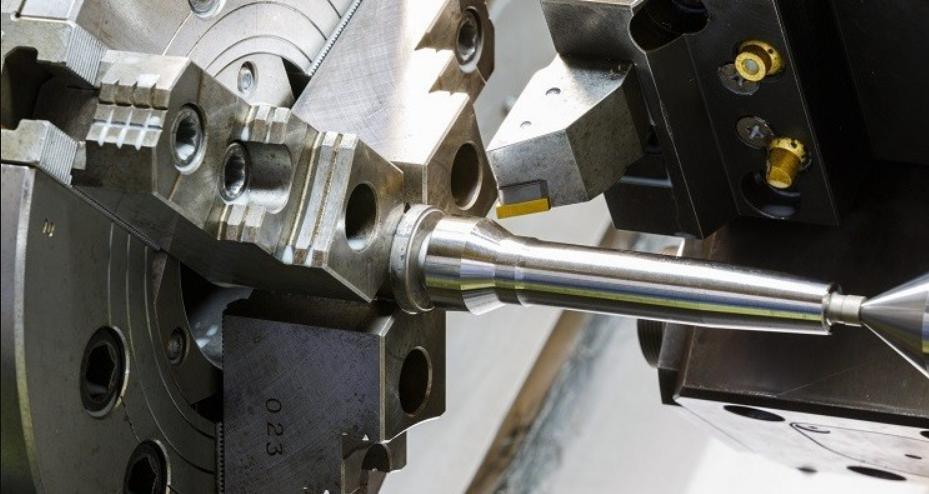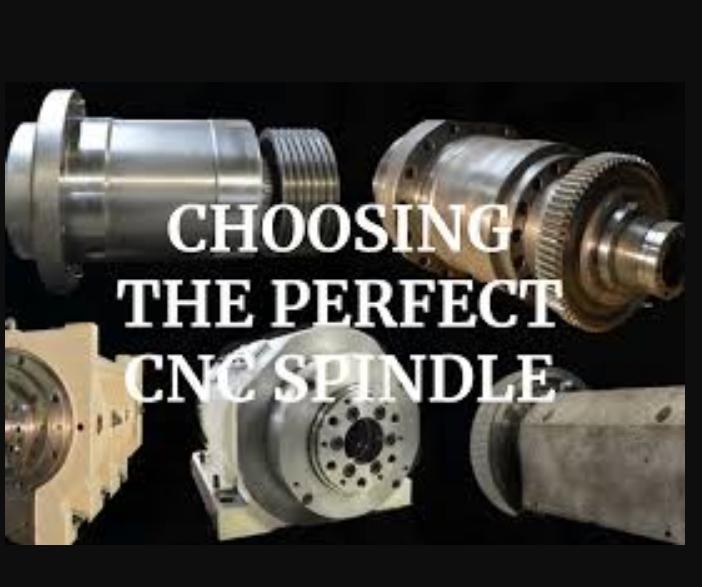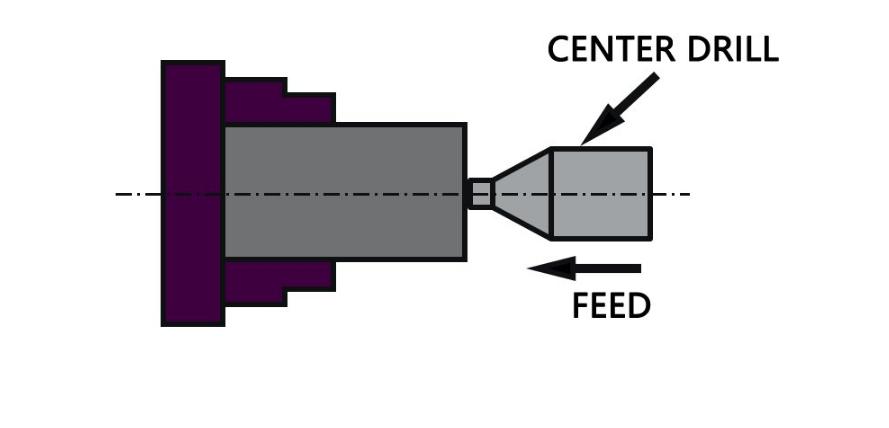Embarking on the journey to select the perfect spindle liners for CNC lathes requires understanding key factors: the capability of an advanced manufacturing system may be limited by material compatibility, size tolerances, and functional demand. It is a roadmap, having accompanying instructions that thoroughly treats the topic and narrows it down to what is irrefutable. Our goal is to facilitate your decision-making journey by scrutinizing liner materials, spin parameters and technical details.

Spindle liners for CNC lathes optimize performance. Critical for maintaining dimensional stability, these liners ensure precision. Key components include polyurethane or metal materials, fitting various bar diameters. Enhancing operational efficiency, spindle liners reduce downtime and facilitate quick changeovers.
Purpose-driven, spindle liners enhance CNC lathe functionality. Designed for compatibility, they accommodate multiple bar sizes, ensuring seamless operation. Liners stabilize workpieces, minimizing errors. Essential for high-volume production, these components streamline processes.
Vibration reduction is paramount with spindle liners. These tools significantly dampen operational noise, improving work environment quality. Enhanced precision and reduced wear on machinery result from their use. Vital for prolonged machine life, spindle liners contribute to maintaining equipment integrity.
Accuracy improvement is a direct benefit of utilizing spindle liners. By aligning workpieces precisely, they ensure uniform product quality. Critical in achieving tight tolerances, liners aid in the production of complex parts. They are indispensable for industries demanding exact specifications.
Material support through spindle liners ensures efficient machining of diverse materials. By providing stable support, they enable precise cuts and extend tool life. Adaptable to various bar sizes, these liners are essential for versatile manufacturing needs. Their role in optimizing production cannot be overstated.

Choosing a lathe model requires understanding specific project demands. Key factors include material type, part complexity, and precision level. Models vary in capabilities, from basic to advanced multitasking machines. Decision-making hinges on matching lathe functionalities with workshop production goals.
Spindle size directly impacts machining capability. Larger diameters accommodate bigger workpieces, crucial for expansive projects. Smaller spindles suit precision tasks. Evaluating workload and material sizes determines the optimal spindle dimension. This choice affects overall lathe efficiency and output quality.
Operation speed is vital for meeting production timelines. Higher speeds enable rapid part manufacturing, essential in high-demand settings. Balance between speed and precision guide’s selection. Optimal operation speed varies, dependent on material hardness and intricacy of designs. Adjusting speed settings maximizes tool life and ensures product consistency.
Production volume dictates CNC lathe selection. High-volume environments demand durable, fast machines with automation capabilities. For smaller batches, versatility and precision take precedence. Assessing expected output helps in choosing a lathe that aligns with operational scale. Strategic investment in the right equipment enhances productivity and reduces bottlenecks.
CNC lathes handle a vast array of metal types, from soft aluminum to hard titanium. Each metal presents unique machining requirements. Tooling, speed, and lubrication vary accordingly. Understanding metal characteristics ensures optimal machining strategies. Selection influences finished product quality.
Diverse plastic varieties, from ABS to polycarbonate, require specific CNC lathe adjustments. Machining parameters adjust for melting points and rigidity. Knowledge of plastic properties aids in preventing deformation. Precise temperature control quality and tooling selection are crucial.
Dimension range encompasses material length, diameter, and thickness. CNC lathes accommodate a wide spectrum, from slender rods to bulky plates. Matching spindle capacity and bed size with project dimensions ensures efficiency. Accurate assessment prevents machining errors and material waste.
Shape variability challenges CNC lathe capabilities. Complex geometries demand advanced programming and precise tool paths. From simple cylinders to intricate 3D forms, adaptability is key. Technological advancements enhance lathe versatility, meeting diverse shape requirements.
The CNC lathe liners which are made up of polyurethane, feature some excellent properties that include flexibility and durability. With the ability to be able to adapt to any when steel mills, they are recommended for the job as they do vibration transfer reduction. Being able to put up is the chemical and abrasive qualities of these tools make them popular for extended operations.
Choice can be made under condition of particular technical requirements of a machine and type of a material the workpiece made of, to adjust operation accuracy of a machine tool.
Metal spindle liners, made of steel or aluminum, secure the proverbially cold-blooded precision. They deliver unparalleled rigidity which is in fact increasingly needed for the speed rate of machining. Ensuring the improved heat dissipation is achieved, metal liners are suitable for operations which demand tight tolerances and high stability. Their performance on a wide range CNC lathes is compatible which makes them usable. Such investments, one way of justifying their long life and sturdiness, are worthwhile.
Adjustable spindle liners revolutionize CNC lathe setups. Their versatility allows quick selection changes between jobs, reducing downtime. Designed for a range of bar diameters, they offer a cost-effective solution. Easy adjustment and installation support dynamic manufacturing environments. Emphasizing flexibility, adjustable liners adapt to evolving production demands.
High-density spindle liners excel in minimizing vibrations and noise. Their robust construction is suited for heavy-duty machining. Optimizing the interface between bar stock and machine, they improve surface finish. These liners are indispensable for precision tasks requiring utmost stability. Selecting high-density options ensures peak lathe performance.

The smooth running of all CNC lathes also depends on well-calibrated material flow. Spindle liners, as you know, stand at the forefront of the process. They provide for non-stop, faultlessly moving of components which keep production highly productive.
Thus, the purpose is to choose the best liner materials and size for not only reducing the friction but the wear too. It also prevents jams. This obviously statistic is very significant when material and production standards are maintained to be high as well as minimized downtime.
Raw speed parametric with spindle liners should be maintained during CNC lathe works. Listen to the given audio and select the best speaker in each question. Right side liner must endure machine’s operational range of speeds (minus architectural and mechanical contraption).
It guarantees that the workpiece does not move, even at high speed, to achieve finer accuracy. Respected and value lines which can match the rpm of the lathe are important in the perfect machining process. This is aid in improving the efficiency and reliability of the machining process thereby improving the quality of the output.
A lack of feed consistency in computer numerical control lathing procedures can result in inaccurate or poor finish of the final part. Spindle liners are simply one of the main features to achieve continual feed rates. They hold the tooling, giving it a couple places to bend during the machining process and thus reduce the degree of vibrations and material advancement.
Such a hard consistency is essential for making elements with specific sizes and a good finish. Having a spindle liner come on the factory’s premise that enhances uniform feed rate is the indisputable factor when it comes to the provision of the consistent, high-quality products.
In comparison to rivals the spin liners that interpreted CNC lathe would showcase very high wear resistance. Such strength allows the product to work properly and last long irrespective of zooming in and out very frequently. Picking on stuffs like polyurethane or reinforced composites can have a positive influence on liner life. Wear resistance is an important factor for keeping precision; therefore, there will be a smaller amount of replacements of metal cutting tools that will lead to charged less operational costs.
When dealing with machinery operation in coolant and lubricant environments, the ability of the spindle liners to withstand chemical erosion is of primary importance.
Same kinds of materials, like high-grade polymers, are resistant to corrosive substances, which helps to prolong its service life. The reliability helps in avert an unpredictable machining environment, which is a crucial factor for high-level processes in specialized manufacturing companies that use aggressive chemicals.
Resilience against harm in the grinders lessens shocks and loads during CNC lathe cutting. High-power materials create a tent form of workpiece, guaranteeing constant support of the tool.
Highly optimal impact strength in addition with preconditioned smoother machining will lead to a better quality of finished product. This material is used for high-performance machining, where the place is exact, and there is no chance.
Proper axial-alignment will be very crucial as far as CNC lathe matters. Accuracy in machining the liner to the spindle will automatically contribute to a much reduced runout and finally tool life premiumization. Accurate alignments are a must-do to ensure the stated surface finish.
It is also one of the key elements used for ensuring that element dimensions of machined parts are kept. Precision and machine performance may be maximized by use of spindle liners that guarantee precise alignment, an effort which will be passed on to the customer in form of top quality products.
Symmetry of spindle liners in rotation sense resulting in the uniform forces distribution while machining. As a result, rotary symmetry is so important because it prevents eccentricity.
Ducts of perfect rotation symmetry allow principal axis to be parallel to rotational axis of workpiece and hence there will be very less risk of machining faults. It is highly critical that maximum rotation symmetry of spindle liners is present for the sake of high precision applications; this factor mainly determines the quality of the end result.
The friction in different spindle liners will bring about the ununiformity in CNC lathe operations, which is undesired. Balancing liners evenly across the turn reduces a vibrations level, which leads to the extra precision of the machines operations. Precision is achieved by guaranteeing firmness that is one of the pillars of any reliable and efficient production process.
Although the hollow liners of the spindles can normally be homogeneously balanced, it is possible to improve the lifespan of the tools as well as the surface finish by doing so. The liner balancing and accurate centering must be the clue for the spindle liners to provide the correct uniformity of the CNC milling machine operation.
|
Factor |
Material Flow |
Speed Compatibility |
Feed Consistency |
Wear Resistance |
Chemical Resistance |
Balance Uniformity |
|
Definition |
Rate at which materials are processed |
Matching spindle speed to liner capabilities |
Uniform delivery of materials |
Resistance to material loss from friction |
Ability to withstand corrosive substances |
Uniformity in liner's weight distribution |
|
Importance |
Maximizes throughput |
Ensures operational efficiency |
Reduces variations in machining |
Extends liner lifespan |
Protects against operational hazards |
Reduces vibration and wear |
|
Measurement |
Cubic feet per minute (CFM) |
Revolutions per minute (RPM) |
Percentage of consistency |
Hardness scale (e.g., Vickers) |
pH resistance range |
Balance grade (G) |
|
Typical Materials |
Polyurethane, Metal |
Steel, Aluminum, Polyurethane |
All liner materials |
Hardened steel, Ceramic |
PTFE, Epoxy |
All liner materials |
|
Impact on CNC Lathe |
Increases efficiency |
Matches process speed |
Stabilizes production quality |
Lowers maintenance costs |
Extends machine and liner life |
Minimizes tool wear |
|
Selection Criteria |
Workpiece material and size |
Lathe's maximum RPM |
Type of CNC operations |
Operating environment |
Exposure to chemicals |
Speed of operation |
|
Adjustments/Controls |
Feeder settings |
Spindle speed settings |
Feed rate adjustments |
Liner replacement frequency |
Protective coatings |
Dynamic balancing |
Table on Factors to Consider When Choosing Spindle Liners!
Accurate measurement is crucial when installing spindle liners in CNC lathes. Ensuring the liner fits perfectly within the spindle prevents machining errors and part defects. Use precise instruments to gauge both spindle and liner dimensions. Correct measurements ensure a snug, efficient fit, enhancing machine performance.
Before installing a spindle liner, thorough cleaning of both the liner and the spindle area is essential. Remove any debris, oil, or remnants from previous operations. Clean surfaces enhance the liner's fit and function. Regular maintenance and cleanliness prolong the life of both the spindle and liner.
Alignment checks are critical during spindle liner installation. Proper alignment ensures the liner is centered, promoting uniform wear and optimal performance. Use precision tools to verify alignment. Misalignment can lead to premature wear, reduced accuracy, and potential machine damage.
Securing the spindle liner firmly in place is vital for operational stability. Ensure all fastening mechanisms are properly tightened and checked. A securely fastened liner maintains concentricity and precision during machining processes. Regular checks prevent loosening and potential operational hazards.

The right spindle liner significantly boosts CNC lathe efficiency. Optimal fit reduces setup times and enhances material flow. This efficiency translates to faster production rates and lower operational costs. Selecting a liner that complements your CNC lathe’s capabilities is key to unlocking maximum productivity.
Quality consistency in CNC lathe operations hinges on the precise selection of spindle liners. A perfect match ensures steady support for workpieces, reducing errors. Consistent quality across batches enhances reputation and client satisfaction. Invest in spindle liners that align with your lathe’s specifications for unwavering quality.
In the precision CNC machining not only minimization of vibration but also being able to control vibration is important. To suppress vibrations, spindle liners contain dampers which improve the operations smoothness. With no mechanical variations emanating from the source material, the finish of parts will be smooth and part dimension will be precise. Pick up with the vibration dampening liners for the sake of elongating lathe and arrow life.
Working with correct spindle insert forming an extended tool life is a direct benefit. Due to these different factors, liners prove significant as they reduce vibration frequency, and therefore each tool leak of years. Prolonged tooling life lowers both wear-and-tear costs and downtime of the equipment. For optimum tool life it is recommended that you buy spindle liners with the best simultaneous features of compatibility and performance not only with your CNC lathe but also any other device.
Pick up of proper waiting spindles liners for CNC lathes are based on thorough analysis of your lathe features and its appropriateness. Use of this guide as your way to guide shall then help you in advancing both machining accuracy and efficiency. Long on precision or excellence CNCYANGSEN, tailors CNC lathe operations that bring the required results.